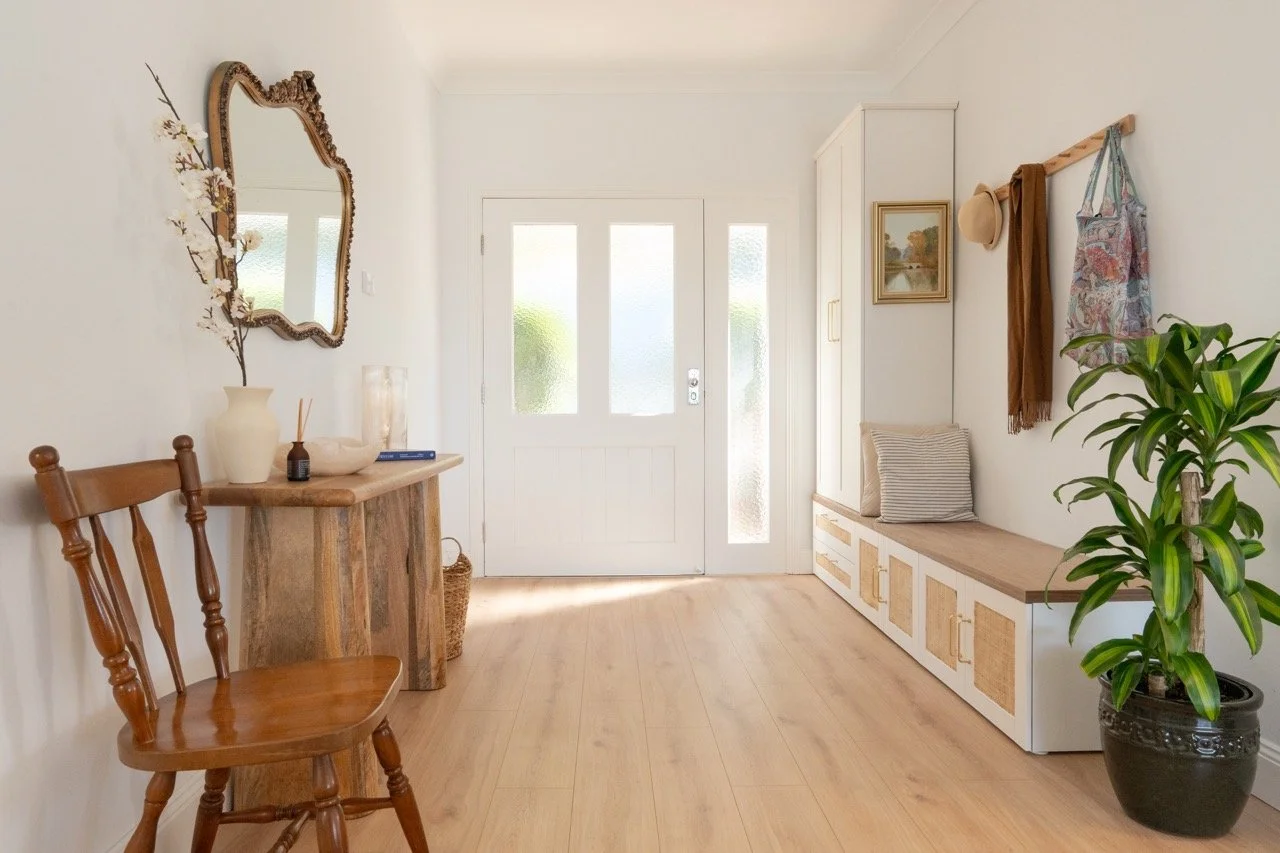Why your home feels dark (it's not the lamps)
My living room used to feel like a cave.
I'd flick on every lamp I owned, buy brighter bulbs, even consider those harsh overhead lights everyone warns you against.
But nothing worked.
That's when I realized something obvious: I was fighting natural light instead of working with it.
Once I stopped trying to overpower darkness and started stealing light from other rooms, everything changed.
Here's how you can do the same...
Borrow Light Like a Pro
One of my favourite tricks is “borrowed light.”
If you've got one bright room and one dim room next to each other, connect them with glass.
Here are your options…
1. Transom windows above doors (a classic)
2. Glass panel doors that filter light even when closed
3. Internal glass walls or Crittal-style doors
Even partial glass, like frosted or fluted, works beautifully if you want privacy.
The goal is to get light coming from more than one direction. That’s what separates a room that feels balanced from one stuck half in shadow.
Your Doors Are Light Blockers
Most standard swing doors are light blockers. They sit perpendicular to the wall and cast shadows when they’re open.
If you can, consider something lighter and more fluid. These are your best options:
Pocket doors disappear into the wall completely.
Folding doors collapse back on themselves, freeing up the opening.
Even replacing one or two major doors, say between your living room and hallway, can transform how bright those spaces feel.
Add Windows Where You Least Expect Them
Clerestory windows sound fancy, but you've seen them everywhere.
They're those windows high up on the walls, just below the ceiling.
Adriano Pupilli Architects (left) & Olaver Architecture (right)
Why they're brilliant:
Daylight without sacrificing privacy
Wall space stays free for furniture and art
Instant architectural character (used for thousands of years, in temples and cathedrals)
They’re especially good in bathrooms or rooms facing a neighbour’s wall where you want brightness but not exposure.
But sometimes the easiest fix isn’t adding more windows…
It’s trimming back trees or shrubs outside so the light you already have can actually get in.
Don't Ignore Your Front Door
This one’s overlooked. Your front door can be a great light source.
You don’t need a giant glass panel that puts your entry on display. A few small inserts or textured or leaded glass can give you subtle, filtered daylight right into your entryway.
I did exactly this in my own home, added textured glass panels to our front door, and now our entryway gets this gorgeous, filtered light instead of feeling like a dark tunnel.
Work Your Light
Getting light in is step one. Making it move is step two.
Here's your action plan:
Use lighter paint colors to amplify whatever daylight you've got.
Position mirrors opposite windows to bounce light around the room.
Add reflective surfaces: glossy tables, glass splashbacks, anything that catches and redirects light.
Why This Matters
Natural light isn't just about making rooms look better.
It changes how you feel at home.
Easier mornings. More energy throughout the day. Spaces that feel bigger without knocking down walls.
If you want more ideas to maximise light and brighten your home, check out this video 👇
Cheers,
Reynard













